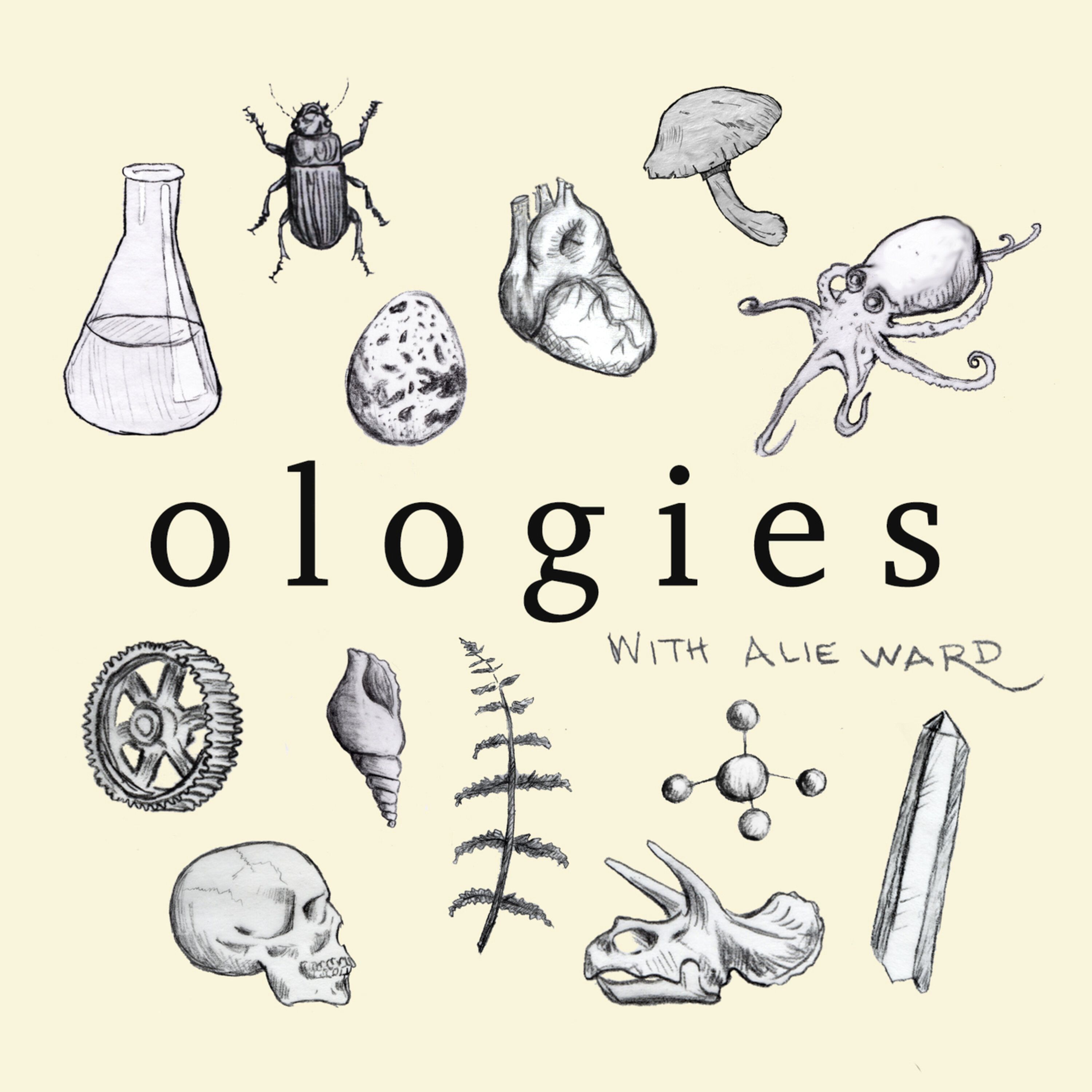
Heliox: Where Evidence Meets Empathy
Join our hosts as they break down complex data into understandable insights, providing you with the knowledge to navigate our rapidly changing world. Tune in for a thoughtful, evidence-based discussion that bridges expert analysis with real-world implications, an SCZoomers Podcast
Independent, moderated, timely, deep, gentle, clinical, global, and community conversations about things that matter. Breathe Easy, we go deep and lightly surface the big ideas.
Curated, independent, moderated, timely, deep, gentle, evidenced-based, clinical & community information regarding COVID-19. Since 2017, it has focused on Covid since Feb 2020, with Multiple Stores per day, hence a sizeable searchable base of stories to date. More than 4000 stories on COVID-19 alone. Hundreds of stories on Climate Change.
Zoomers of the Sunshine Coast is a news organization with the advantages of deeply rooted connections within our local community, combined with a provincial, national and global following and exposure. In written form, audio, and video, we provide evidence-based and referenced stories interspersed with curated commentary, satire and humour. We reference where our stories come from and who wrote, published, and even inspired them. Using a social media platform means we have a much higher degree of interaction with our readers than conventional media and provides a significant amplification effect, positively. We expect the same courtesy of other media referencing our stories.
Heliox: Where Evidence Meets Empathy
Sweet Betrayal: Our Love for Honey is Silently Killing the Wild Bees
We’ve all bought into the fairytale: the gentle hum of the honeybee, a symbol of nature’s bounty, tirelessly flitting from flower to flower, the unsung hero of our food supply. We slather their golden nectar on toast, stir it into our tea, and feel a virtuous connection to the natural world. But what if this idyllic picture is a dangerous illusion? What if our unwavering affection for the honeybee is blinding us to a silent crisis unfolding in our own backyards and protected wildernesses?
The truth, as often happens in nature, is far more complex and, frankly, a bit uncomfortable. While honeybees (Apis mellifera) are indeed vital for many agricultural crops, their widespread introduction and management at high densities are casting a long shadow over their wild cousins – the native bees that have been quietly and diligently pollinating our ecosystems for millennia.
For too long, the narrative has focused on the plight of all bees, often conflating the well-managed populations of honeybees with the alarming declines of wild bee species. It’s a convenient blurring of the lines, one that allows us to feel like we’re “saving the bees” simply by buying local honey or planting bee-friendly gardens, often dominated by the very flowers that further fuel the honeybee boom.
But a groundbreaking study conducted on the protected island of Giannutri in the Tuscan Archipelago National Park, Italy, pulls back the curtain on this uncomfortable truth with stark clarity ... continue reading the article
This is Heliox: Where Evidence Meets Empathy
Independent, moderated, timely, deep, gentle, clinical, global, and community conversations about things that matter. Breathe Easy, we go deep and lightly surface the big ideas.
Thanks for listening today!
Four recurring narratives underlie every episode: boundary dissolution, adaptive complexity, embodied knowledge, and quantum-like uncertainty. These aren’t just philosophical musings but frameworks for understanding our modern world.
We hope you continue exploring our other podcasts, responding to the content, and checking out our related articles on the Heliox Podcast on Substack.
About SCZoomers:
https://www.facebook.com/groups/1632045180447285
https://x.com/SCZoomers
https://mstdn.ca/@SCZoomers
https://bsky.app/profile/safety.bsky.app
Spoken word, short and sweet, with rhythm and a catchy beat.
http://tinyurl.com/stonefolksongs
Curated, independent, moderated, timely, deep, gentle, evidenced-based, clinical & community information regarding COVID-19. Since 2017, it has focused on Covid since Feb 2020, with Multiple Stores per day, hence a large searchable base of stories to date. More than 4000 stories on COVID-19 alone. Hundreds of stories on Climate Change.
Zoomers of the Sunshine Coast is a news organization with the advantages of deeply rooted connections within our local community, combined with a provincial, national and global following and exposure. In written form, audio, and video, we provide evidence-based and referenced stories interspersed with curated commentary, satire and humour. We reference where our stories come from and who wrote, published, and even inspired them. Using a social media platform means we have a much higher degree of interaction with our readers than conventional media and provides a significant amplification effect, positively. We expect the same courtesy of other media referencing our stories.
This is Heliox, where evidence meets empathy. Independent, moderated, timely, deep, gentle, clinical, global, and community conversations about things that matter. Breathe easy. We go deep and lightly surface the big ideas. Welcome back, everybody, to the Deep Dive. This time, we're going deep, deep into the world of bees. Yeah. Specifically, the sometimes fraught relationship between the managed honeybees we all know and love, those ones in the hives, and their wild, often overlooked cousins. And we've got a fantastic piece of research to guide us to really unpack this, you know, sometimes complex relationship. And I think, you know, it might even change the way you think about honey. Oh, interesting. So to set the scene for us, this research we're diving into takes us to, you know, this idyllic Mediterranean island. Yeah. Genutri Island off the coast of Italy. Beautiful place. And it's really like a natural experiment because researchers have been able to observe what happens when you introduce a specific number of honeybee colonies. Yeah. To a place. Yeah. That already has its own established wild bee population. Right. And I think for everybody listening, what we're really going to try to understand is the consequences of doing that, right? Yeah. Of what happens when you suddenly have a lot of honeybees. In a natural area. Yeah, absolutely so. So what makes Genutri Island so special in this context? I think one of the things that's really compelling about Genutri is that it is relatively untouched by human development. Right. So it provides a sort of baseline. Okay. Which is really useful as a comparison. And critically, since 2018, around 18 honeybee hives have been brought there every year. Okay. Typically between December and June for mating purposes. Okay. And this relatively recent introduction of honeybees really helps us to see what happens in the early stages of the interaction between managed honeybees and the existing wild bees. So like the beginning of a relationship almost. How does this all unfold? Exactly. And the island itself is really quite small. Only about 2.6 square kilometers. Okay. Which means that any impact from the honeybees is likely to be felt across the entire island. Right. Plus, and this is super important for the study, there are no other managed honeybee colonies there. So that creates a very controlled experiment, including the ability to actually temporarily remove the introduced honeybees. Okay. And see what happens. So before we get into that and what happens, can you tell us a little bit about the wild bees that are native to this area? So the wild bee community is dominated by two key players. You have Anthophora dyspar, which is a solitary bee, meaning that each female builds her own nest. And then there's Bombus terrestris, the common bumblebee, which lives in colonies. Okay. So one social, one solitary. That's right. Okay. And I imagine both of these are very important for the local plants. Both are important pollinators. Yeah, absolutely. Okay. So these researchers, they weren't content to just watch from a distance. No, no. They had to get... Revont, absolutely. So what did they do? Well over three years. Yeah. From 2022 to 2024, they conducted this really interesting experiment where they temporarily removed the honeybees by closing up their hives for 11 hours during the peak foraging time for the wild bees. So this allowed them to study the immediate short-term effects of that removal. Gotcha. And they also did long-term monitoring from 2021 to 2024 to see how the populations were trending over time. So they had this short-term removal and then the long-term observation. Yeah, exactly. Okay, so honeybees are there and they're not. Researchers are watching. What happens with the wild bees? What happens with the flowers? And the first sort of obvious question, I guess, is are the honeybees and the wild bees actually competing for food? Right. That's a very fundamental question. When you're looking at potential competition and the evidence, pretty strongly suggests that they are. When the honeybee hives were open, honeybees made up almost 60% of all flower visits. Wow. Okay. And they were particularly fond of. Certain plants like Teucrium fruticans, which is a type of shrub. Okay. Salvia rosmarinus, that's rosemary, and euphorbia dendroids. And those same plants were really important for the native wild bees. Okay, so it's like everyone's going to do the same buffet. What's the takeaway here? Well, I think the takeaway is that, you know, introducing a very successful forager, like the honeybee, Right. immediately creates additional pressure on those resources. Right. And then the research gets even more interesting. Because when they temporarily removed the honeybees, Right. What they noticed was a change in the pollination network. It became more specialized. Yes. What does that mean? Well, it means that instead of, you know, lots of different bees visiting a wide variety of flowers, the network became more structured with specific bees linked to specific plants. And it also meant that the potential for apparent competition significantly decreased. So apparent competition, I think that deserves a little bit more explanation. Right. Apparent competition. So let's imagine you and I are both, you know, really craving the last slice of pizza. Yeah. Now, even if I don't directly grab it first, the fact that we both want it creates a competitive environment. So in this case, the honeybees and wild bees aren't directly fighting each other, but their shared need for the same flowers creates that apparent competition. Okay. So their presence alone is creating competition. So when they remove the honeybees, the network changes, and that potential for competition goes down. That's right. Okay, so were there specific benefits that the wild bees experienced when the honeybees were temporarily gone? Yes, there were. Especially for Anthophora despar, the solitary bee, their relevance in the network increased, and the apparent competition it faced decreased. Bombus terrestris, the bumblebee, showed a similar pattern, but the effects were a bit less pronounced. So maybe bumblebees have a little bit more of a flexible diet? It's possible, yeah. Now they also looked at how this competition changed over the year. Right. So they found that the potential apparent competition between honeybees and both wild bee species actually increased as the season progressed. Okay. Why is that? Well, that's probably because honeybee colonies grow as the season goes on. Which means there's more mouths to feed, more pressure on those resources. So the longer the honeybees are there, the more intense the competition. Yeah, exactly. Okay, so when the honeybees were removed, did the wild bees immediately start going, two different flowers? You know, they didn't see an immediate shift in the types of flowers the wild bees were using during that short removal. Okay. Which suggests that they were really dependent on the same resources. as the honeybees. So they're all going to the same menu. Pretty much, yeah. So, big question. Are the honeybees actually eating so much that they're depleting the food supply? Right, so when it comes to resource availability, they focused on nectar and pollen. And what they found was when honeybees were temporarily removed, there was an increase of about 30% in the amount of pollen available. On two cream fruticans. Okay. And that increase was even more noticeable near the apiary. Where the hives were. Right, so most foraging. Closest to the lives. Yeah. Okay, what about nectar? So the impact on nectar was even more striking. When honeybees were removed, the volume of nectar in the flowers of Tukran prudikins went up by about 50%. And in selvia, rosmarinus, rosemary, went up by a massive 70%. Wow. And that was only in the flowers that were open to pollinators. Right. Flowers that were bagged and protected. Showed no such increase. Really? Indicating it's the lack of honeybees. That led to that surge. Exactly. Now it's a big increases. Yeah. Okay, so roughly how much nectar were the honeybees consuming? Well, it was estimated that when honeybees were present, about half the available nectar was consumed compared to about 30% when they were absent. Okay, so significant difference. Did the quality of nectar change? The sucrose concentration stayed the same. Whether the honeybees were there or not, it was generally lower. And flowers that were open to the air, probably due to evaporation. Right. So, finally, with this resource availability, did distance from the hives have the same impact on nectar as it did on pollen? You know, not really. While pollen availability increased further away from the hives, when honeybees were removed, the distance from the apiary didn't seem to impact nectar availability. Okay. And they think that might be because. Honeybees fly further to forage for nectar than they do for pollen. Okay, so honeybees competing for food, reducing how much is available. Now, the study also looked at whether the presence of honeybees might be changing the activity patterns of the wild. Of bees. Yeah, right. So are they foraging at different times or in different places? Yeah, so honeybees were more frequently observed near their hives and during the middle part of the day, which obviously can impact where the wild bees choose to forage. Yeah, so were the wild bees, spending less time on the flowers when the honeybees were around. This is a bit of a nuanced finding. Both Bombus terrestris and Anthophora disbar spent less time in flower patches. When honeybees were absent, however, for Anthophora disbar, the times when it spent longer actually coincided with the peak foraging times of the honeybees. So maybe trying to, you know, get in before honeybee rush. It's possible. Or get in when it's really, you know, busy. and try and out-compete them. What's the core insight here? The key takeaway here is that the presence of the honeybee can alter the behavior of the wild bees. Okay. And they also looked at movement patterns. I did, yeah. So how did honeybees affect where the wild bees were going? Well, they found that anthophorid disbars movements both within a patch and between patches decreased when honeybees were present, especially when the honeybees were most active. And then Bombus terrestris' activity across patches was lower near the apiary. Okay, so sort of less desirable zones near the apiary. What about the times of day they were out and about? So in the presence of honeybees, Anthephorid dispar concentrated their activity in the early morning, so potentially to avoid direct competition with the honeybees. So really shifting their schedule to try to find a window. Absolutely. Okay, and then this all went on for several years. So what did they find in the long term? How about foraging activity? So the long-term trends were a bit worrying. They saw a significant decline in flower visitation rates for both species. They saw a decline in the time spent in flower patches by Anthophora despar, and they saw a general reduction in the number of wild pollinators observed. So alongside this potential competition, a decline in activity. Now, they also looked really closely at how the wild bees were collecting nectar and pollen. Like, how long did they spend on each flower? Right. So they measured something called nectar suction time, which is essentially how long a bee spends drinking nectar. Okay. And they found that suction time increased. For both wild bee species during those short periods when honeybees were removed. So that's meaning that they were able to access more nectar when the competition was lifted. And I guess conversely, when honeybees were present, suction time was shorter. Especially near the apiary. That's right. So less reward for their effort. Yeah. The hate was up low over a raft. What about the time between, you know, visiting flowers for nectar and pollen? Right. So they look at the lag time. Between nectar probing events, and that was shorter, near the apiary, when honeybees were present for both species, and then for pollen, the lag time between collection events was shorter. For bombus terrestris, during honeybee removal. Okay, so again, reduced efficiency, competing with honeybees. So all this, you know, sort of, short-term change and potential limitations leads to a big question. What's happening? to the populations of wild bees on this island. Oh. Long term. This is perhaps the most concerning finding. Over four years of monitoring, they documented, a decline of approximately 80%. Wow. 80%. Yeah. Okay, what's causing that? So they considered other factors, like climate, but they looked at temperature and rainfall during the active period for the wild bees, and there weren't any significant changes, which really suggests that the competition with the honeybees is a primary driver. Okay, so this isn't just a minor fluctuation. This is a big deal. And it's linked to the introduction of honeybees. Yeah. And it was interesting because the short-term removal didn't seem to have an impact on the number of wild bees. They observed. I think it suggests that, wow, the long-term competition is having a severe negative effect. The wild bees weren't being immediately displaced or killed off. During that short window, it's a more gradual thing. Okay. And then finally, did the researchers notice any changes in the amount of flowers on the island during those years? They did, yeah. They actually observed a significant decrease in flower coverage. Okay. So if there's less food, that makes competition even more intense. Okay, so let's connect all these dots we've got. Direct competition for food, reduction in nectar and pollen, changes in how they forage, and this huge decline in population. So this all seems to point towards this idea of exploitative competition. What is? Exploitative competition. Well, exploitative competition basically means that one species is reducing the amount of resources available to another by consuming them. So the honeybees are essentially eating so much of the food that there's less for the wild bees. And that's having a negative impact on their behavior. So for our listeners, the big takeaway here is even though we think of honeybees as beneficial, Introducing them in large numbers can have these unintended consequences for wild bees. Right. It's a complex issue. Yeah, it's not as simple as it seems. And this study really makes you think about the bigger picture. It does. It really does. So here's something for everyone to ponder after this deep dive. Given what we've learned, what are the ethical considerations around managing honeybees in these sensitive areas? How do we balance that economic importance of honeybees for agriculture with protecting the biodiversity of our wild pollinators? Yeah, it's a tough question. It's a tough one, but an important one. And we'd encourage you to keep exploring this topic of pollinator decline and all the factors involved. Right. There's so much more to learn. Definitely. So thanks for joining us on this deep dive into the fascinating world of honeybees and wild bee competition. It's been a pleasure. Always a pleasure. Thanks for listening today. Four recurring narratives underlie every episode. Boundary dissolution, adaptive complexity, embodied knowledge, and quantum-like uncertainty. These aren't just philosophical musings, but frameworks for understanding our modern world. We hope you continue exploring our other podcasts, responding to the content, and checking out our related articles at heliocspodcast.substack.com.


















